-
×
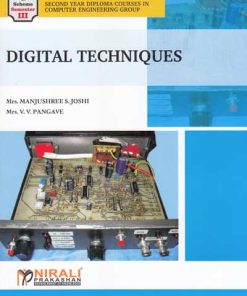 DIGITAL TECHNIQUES
1 × ₹260.00
DIGITAL TECHNIQUES
1 × ₹260.00 -
×
 MATHEMATICS PAPER I : CALCULUS
1 × ₹90.00
MATHEMATICS PAPER I : CALCULUS
1 × ₹90.00 -
×
 ENGINEERING GEOLOGY | S. K. DUGGAL , H. K. PANDEY, N. RAWAL | McGraw Hill
1 × ₹376.00
ENGINEERING GEOLOGY | S. K. DUGGAL , H. K. PANDEY, N. RAWAL | McGraw Hill
1 × ₹376.00 -
×
 PHARMACOGNOSY VII (7) for Gujarat Technological University (GTU)
1 × ₹60.00
PHARMACOGNOSY VII (7) for Gujarat Technological University (GTU)
1 × ₹60.00 -
×
 HEALTH, PHYSICAL EDUCATION AND YOGA : GENERAL AND PHYSICAL EDUCATION
1 × ₹45.00
HEALTH, PHYSICAL EDUCATION AND YOGA : GENERAL AND PHYSICAL EDUCATION
1 × ₹45.00 -
×
 BUSINESS MATHEMATICS
1 × ₹135.00
BUSINESS MATHEMATICS
1 × ₹135.00 -
×
 Language Pragati Question Papers Set - 12th Std (English Yuvakbharati, Marathi Yuvakbharati and Hindi Yuvakbharati) - As per 2020 Syllabus for Class 12th
1 × ₹127.50
Language Pragati Question Papers Set - 12th Std (English Yuvakbharati, Marathi Yuvakbharati and Hindi Yuvakbharati) - As per 2020 Syllabus for Class 12th
1 × ₹127.50 -
×
 BIOLOGY (Std. XII - SCIENCE) - PRAGATI EASY GUIDES - As per 2020 Syllabus for Class 12th
1 × ₹170.00
BIOLOGY (Std. XII - SCIENCE) - PRAGATI EASY GUIDES - As per 2020 Syllabus for Class 12th
1 × ₹170.00 -
×
 A TEXT BOOK OF MECHANICAL MAINTENANCE : TECHNICAL SCIENCE (Std 12th)
1 × ₹61.00
A TEXT BOOK OF MECHANICAL MAINTENANCE : TECHNICAL SCIENCE (Std 12th)
1 × ₹61.00 -
×
 IMO OLYMPIAD WORKBOOK Class 5 | MTG
1 × ₹100.00
IMO OLYMPIAD WORKBOOK Class 5 | MTG
1 × ₹100.00 -
×
 पायाभूत अभ्यास - 2 (PAYABHUT ABHYAS - Foundation Course) - FYBA - Semester 2 - University of Mumbai
1 × ₹70.00
पायाभूत अभ्यास - 2 (PAYABHUT ABHYAS - Foundation Course) - FYBA - Semester 2 - University of Mumbai
1 × ₹70.00 -
×
 समग्रलक्षी अर्थशास्त्र (SAMAGRAHLAKSHI ARTHSHASTRA - Macro Economics in Marathi) - For FYBA - Semester 2
1 × ₹55.00
समग्रलक्षी अर्थशास्त्र (SAMAGRAHLAKSHI ARTHSHASTRA - Macro Economics in Marathi) - For FYBA - Semester 2
1 × ₹55.00 -
×
 INTERNATIONAL BUSINESS ENVIRONMENT
1 × ₹145.00
INTERNATIONAL BUSINESS ENVIRONMENT
1 × ₹145.00 -
×
 MECHANICAL ENGINEERING DRAWING
1 × ₹250.00
MECHANICAL ENGINEERING DRAWING
1 × ₹250.00 -
×
 NOW EASY GRAMMAR & COMPOSITION Std- 2 | Jeevandeep
1 × ₹105.00
NOW EASY GRAMMAR & COMPOSITION Std- 2 | Jeevandeep
1 × ₹105.00 -
×
 मूलभूत समाजशास्त्र (MULBHOOT SAMAJSHASTRA)
1 × ₹128.00
मूलभूत समाजशास्त्र (MULBHOOT SAMAJSHASTRA)
1 × ₹128.00 -
×
 बालकांचा विकास आणि 'स्व' ची जाणीव (BALAKANCHA VIKAS VA SWA CHI JANEEV)
1 × ₹75.00
बालकांचा विकास आणि 'स्व' ची जाणीव (BALAKANCHA VIKAS VA SWA CHI JANEEV)
1 × ₹75.00 -
×
 बृहन्मुंबई महानगरपालिका (BMC) कनिष्ठ अभियंता (यांत्रिकी व विधूत) (BRUHANMUMBAI MAHANAGARPALIKA (MECHANICAL AND ELECTRICAL))
1 × ₹367.50
बृहन्मुंबई महानगरपालिका (BMC) कनिष्ठ अभियंता (यांत्रिकी व विधूत) (BRUHANMUMBAI MAHANAGARPALIKA (MECHANICAL AND ELECTRICAL))
1 × ₹367.50 -
×
 LINEAR ALGEBRA - Mathematics (MTC-121) : Paper I (1)
1 × ₹106.25
LINEAR ALGEBRA - Mathematics (MTC-121) : Paper I (1)
1 × ₹106.25 -
×
 INTERNATIONAL OLYMPIAD OF MATHEMATICS Comprehensive Book Class 1 | SILVER ZONE
1 × ₹180.00
INTERNATIONAL OLYMPIAD OF MATHEMATICS Comprehensive Book Class 1 | SILVER ZONE
1 × ₹180.00 -
×
 BANK CREDIT MANAGEMENT | S. MURALI , K. R. SUBBAKRISHNA | Himalaya Publishing House
1 × ₹391.00
BANK CREDIT MANAGEMENT | S. MURALI , K. R. SUBBAKRISHNA | Himalaya Publishing House
1 × ₹391.00 -
×
 शैक्षणिक तत्त्वज्ञान व समाजशास्त्र (SHAIKSHANIK TATTVADNYAN VA SAMAJSHASHTRA)
1 × ₹250.00
शैक्षणिक तत्त्वज्ञान व समाजशास्त्र (SHAIKSHANIK TATTVADNYAN VA SAMAJSHASHTRA)
1 × ₹250.00 -
×
 OBJECTIVE DAIRY CHEMISTRY | RANVIR S.G., NAVAN K., MESHRAM B.D., PRANALI N. | Jain Brothers
1 × ₹136.00
OBJECTIVE DAIRY CHEMISTRY | RANVIR S.G., NAVAN K., MESHRAM B.D., PRANALI N. | Jain Brothers
1 × ₹136.00 -
×
 FOXPRO 2.5 MADE SIMPLE - BPB PUBLICATION
1 × ₹100.00
FOXPRO 2.5 MADE SIMPLE - BPB PUBLICATION
1 × ₹100.00 -
×
 समस्या सोडवा अंतर्मनाने (SAMASYA SODVA ANTARMANANE)
1 × ₹60.00
समस्या सोडवा अंतर्मनाने (SAMASYA SODVA ANTARMANANE)
1 × ₹60.00 -
×
 PHARMACOGNOSY V (5) for Gujarat Technological University (GTU)
1 × ₹60.00
PHARMACOGNOSY V (5) for Gujarat Technological University (GTU)
1 × ₹60.00 -
×
 MHT CET TRIUMPH PHYSICS 2023 Solutions To MCQs | Target Publications
1 × ₹416.00
MHT CET TRIUMPH PHYSICS 2023 Solutions To MCQs | Target Publications
1 × ₹416.00 -
×
 ELECTRICAL CIRCUITS AND NETWORKS
1 × ₹370.00
ELECTRICAL CIRCUITS AND NETWORKS
1 × ₹370.00 -
×
 DATA STRUCTURE USING C
2 × ₹250.00
DATA STRUCTURE USING C
2 × ₹250.00 -
×
 ALL IN ONE ECONOMICS CBSE Class 12th | Arihant Publications
1 × ₹412.00
ALL IN ONE ECONOMICS CBSE Class 12th | Arihant Publications
1 × ₹412.00 -
×
 MECHANICS OF STRUCTURES
1 × ₹380.00
MECHANICS OF STRUCTURES
1 × ₹380.00 -
×
 हिंदी लोकभारती व्यवसाय (WORKBOOK) कक्षा दसवीं/Std. 10 | नवनीत एज्युकेशन (इंडिया) लि (Navneet Education India Ltd)
1 × ₹220.00
हिंदी लोकभारती व्यवसाय (WORKBOOK) कक्षा दसवीं/Std. 10 | नवनीत एज्युकेशन (इंडिया) लि (Navneet Education India Ltd)
1 × ₹220.00 -
×
 COMMERCE 3 : MANAGEMENT - FUNCTIONS AND CHALLENGES
1 × ₹102.00
COMMERCE 3 : MANAGEMENT - FUNCTIONS AND CHALLENGES
1 × ₹102.00 -
×
 PRAGATI ENGLISH GRAMMAR (INGREJI VYAKARAN) - THOROUGHLY REVISED (For Std 5th to 10th)
1 × ₹120.00
PRAGATI ENGLISH GRAMMAR (INGREJI VYAKARAN) - THOROUGHLY REVISED (For Std 5th to 10th)
1 × ₹120.00 -
×
 PHYSICS Part 2 - NCERT Textbook for Class 12
1 × ₹125.00
PHYSICS Part 2 - NCERT Textbook for Class 12
1 × ₹125.00 -
×
 ENERGY AND ENVIRONMENT ENGINEERING - First Year (F.Y) B.Tech Courses (Group – A : Chemical/Mechanical/Civil/Petrochemical - Semester – I & Group – B : Electrical/Electronics & Telecommunication/Computer/IT - Semester – II)
1 × ₹93.50
ENERGY AND ENVIRONMENT ENGINEERING - First Year (F.Y) B.Tech Courses (Group – A : Chemical/Mechanical/Civil/Petrochemical - Semester – I & Group – B : Electrical/Electronics & Telecommunication/Computer/IT - Semester – II)
1 × ₹93.50 -
×
 MHT CET TRIUMPH BIOLOGY 2023 Solutions To MCQs | Target Publications
1 × ₹88.00
MHT CET TRIUMPH BIOLOGY 2023 Solutions To MCQs | Target Publications
1 × ₹88.00 -
×
 ELECTRONIC DEVICES AND CIRCUIT
1 × ₹215.00
ELECTRONIC DEVICES AND CIRCUIT
1 × ₹215.00 -
×
 STRENGTH OF MATERIALS
1 × ₹430.00
STRENGTH OF MATERIALS
1 × ₹430.00 -
×
 COMPUTER @ SCHOOL Book 1 | Periwinkle/Jeevandeep
1 × ₹102.00
COMPUTER @ SCHOOL Book 1 | Periwinkle/Jeevandeep
1 × ₹102.00 -
×
 साहित्य : विविध वाद (SAHITYA : VIVIDH VAADH)
1 × ₹110.00
साहित्य : विविध वाद (SAHITYA : VIVIDH VAADH)
1 × ₹110.00 -
×
 PETROLEUM AND PETROCHEMICAL TECHNOLOGY - CHEMICAL ENGINEERING – MSBTE – ‘I’ SCHEME
1 × ₹144.50
PETROLEUM AND PETROCHEMICAL TECHNOLOGY - CHEMICAL ENGINEERING – MSBTE – ‘I’ SCHEME
1 × ₹144.50 -
×
 कानमंत्र आई बाबांसाठी | मनोज अंबिके | मिरर पब्लिशिंग
1 × ₹135.00
कानमंत्र आई बाबांसाठी | मनोज अंबिके | मिरर पब्लिशिंग
1 × ₹135.00 -
×
 DATABASE SYSTEM - Computer Technology
1 × ₹98.00
DATABASE SYSTEM - Computer Technology
1 × ₹98.00 -
×
 DEEP LEARNING (Final Year (B.E.) Degree Course In Artificial Intelligence And Data Science - Semester – 8 SPPU)
1 × ₹192.00
DEEP LEARNING (Final Year (B.E.) Degree Course In Artificial Intelligence And Data Science - Semester – 8 SPPU)
1 × ₹192.00 -
×
 HOSPITAL AND CLINICAL PHARMACY
1 × ₹190.00
HOSPITAL AND CLINICAL PHARMACY
1 × ₹190.00 -
×
 VIKAS APPLE TICK TOCK TABLES (1-10) | Navneet Education Ltd
1 × ₹55.00
VIKAS APPLE TICK TOCK TABLES (1-10) | Navneet Education Ltd
1 × ₹55.00 -
×
 BUSINESS LAW - 1
1 × ₹102.00
BUSINESS LAW - 1
1 × ₹102.00 -
×
 THEORY OF MACHINES - G SCHEME
1 × ₹260.00
THEORY OF MACHINES - G SCHEME
1 × ₹260.00 -
×
 ANUSANDHAN KE SIDDHANT
1 × ₹200.00
ANUSANDHAN KE SIDDHANT
1 × ₹200.00 -
×
 CBSE Chapterwise Solved Papers (2023-2010) Class- 12th ACCOUNTANCY | Arihant Publications
1 × ₹318.75
CBSE Chapterwise Solved Papers (2023-2010) Class- 12th ACCOUNTANCY | Arihant Publications
1 × ₹318.75
Subtotal: ₹9,282.00


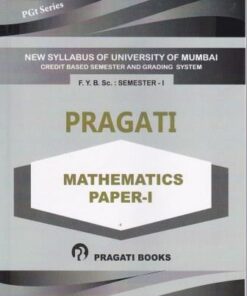 MATHEMATICS PAPER I : CALCULUS
MATHEMATICS PAPER I : CALCULUS 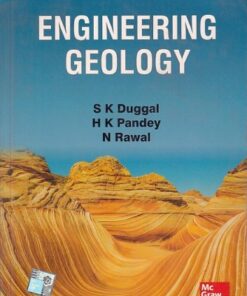 ENGINEERING GEOLOGY | S. K. DUGGAL , H. K. PANDEY, N. RAWAL | McGraw Hill
ENGINEERING GEOLOGY | S. K. DUGGAL , H. K. PANDEY, N. RAWAL | McGraw Hill 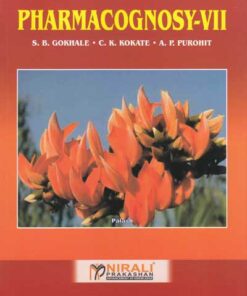 PHARMACOGNOSY VII (7) for Gujarat Technological University (GTU)
PHARMACOGNOSY VII (7) for Gujarat Technological University (GTU) 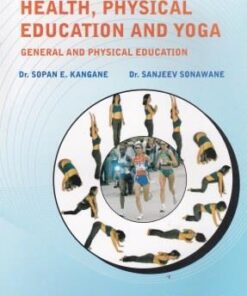 HEALTH, PHYSICAL EDUCATION AND YOGA : GENERAL AND PHYSICAL EDUCATION
HEALTH, PHYSICAL EDUCATION AND YOGA : GENERAL AND PHYSICAL EDUCATION 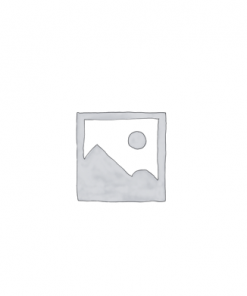 BUSINESS MATHEMATICS
BUSINESS MATHEMATICS  Language Pragati Question Papers Set - 12th Std (English Yuvakbharati, Marathi Yuvakbharati and Hindi Yuvakbharati) - As per 2020 Syllabus for Class 12th
Language Pragati Question Papers Set - 12th Std (English Yuvakbharati, Marathi Yuvakbharati and Hindi Yuvakbharati) - As per 2020 Syllabus for Class 12th 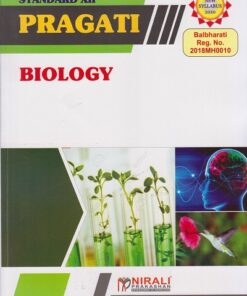 BIOLOGY (Std. XII - SCIENCE) - PRAGATI EASY GUIDES - As per 2020 Syllabus for Class 12th
BIOLOGY (Std. XII - SCIENCE) - PRAGATI EASY GUIDES - As per 2020 Syllabus for Class 12th 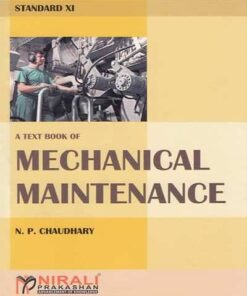 A TEXT BOOK OF MECHANICAL MAINTENANCE : TECHNICAL SCIENCE (Std 12th)
A TEXT BOOK OF MECHANICAL MAINTENANCE : TECHNICAL SCIENCE (Std 12th) 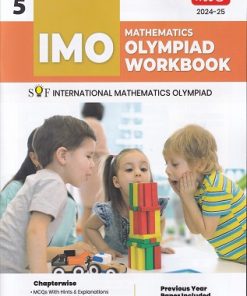 IMO OLYMPIAD WORKBOOK Class 5 | MTG
IMO OLYMPIAD WORKBOOK Class 5 | MTG 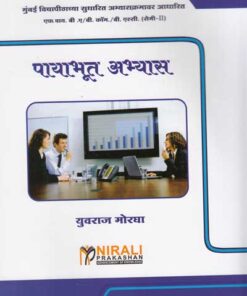 पायाभूत अभ्यास - 2 (PAYABHUT ABHYAS - Foundation Course) - FYBA - Semester 2 - University of Mumbai
पायाभूत अभ्यास - 2 (PAYABHUT ABHYAS - Foundation Course) - FYBA - Semester 2 - University of Mumbai 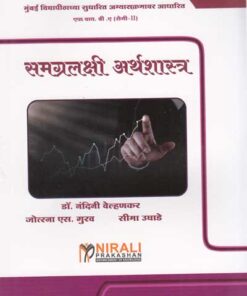 समग्रलक्षी अर्थशास्त्र (SAMAGRAHLAKSHI ARTHSHASTRA - Macro Economics in Marathi) - For FYBA - Semester 2
समग्रलक्षी अर्थशास्त्र (SAMAGRAHLAKSHI ARTHSHASTRA - Macro Economics in Marathi) - For FYBA - Semester 2 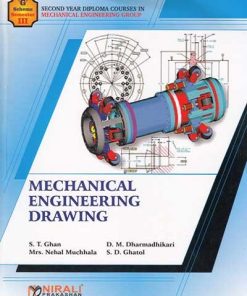 MECHANICAL ENGINEERING DRAWING
MECHANICAL ENGINEERING DRAWING 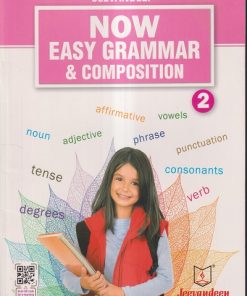 NOW EASY GRAMMAR & COMPOSITION Std- 2 | Jeevandeep
NOW EASY GRAMMAR & COMPOSITION Std- 2 | Jeevandeep 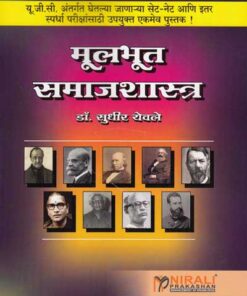 मूलभूत समाजशास्त्र (MULBHOOT SAMAJSHASTRA)
मूलभूत समाजशास्त्र (MULBHOOT SAMAJSHASTRA) 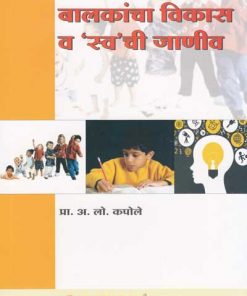 बालकांचा विकास आणि 'स्व' ची जाणीव (BALAKANCHA VIKAS VA SWA CHI JANEEV)
बालकांचा विकास आणि 'स्व' ची जाणीव (BALAKANCHA VIKAS VA SWA CHI JANEEV) 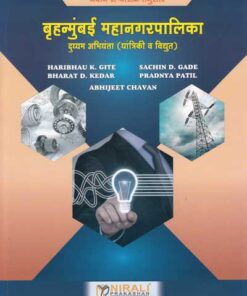 बृहन्मुंबई महानगरपालिका (BMC) कनिष्ठ अभियंता (यांत्रिकी व विधूत) (BRUHANMUMBAI MAHANAGARPALIKA (MECHANICAL AND ELECTRICAL))
बृहन्मुंबई महानगरपालिका (BMC) कनिष्ठ अभियंता (यांत्रिकी व विधूत) (BRUHANMUMBAI MAHANAGARPALIKA (MECHANICAL AND ELECTRICAL)) 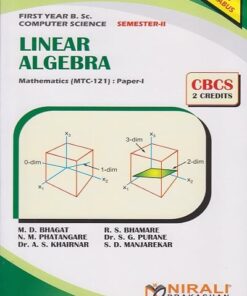 LINEAR ALGEBRA - Mathematics (MTC-121) : Paper I (1)
LINEAR ALGEBRA - Mathematics (MTC-121) : Paper I (1) 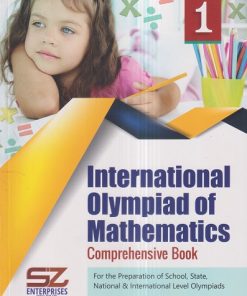 INTERNATIONAL OLYMPIAD OF MATHEMATICS Comprehensive Book Class 1 | SILVER ZONE
INTERNATIONAL OLYMPIAD OF MATHEMATICS Comprehensive Book Class 1 | SILVER ZONE 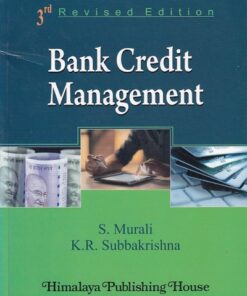 BANK CREDIT MANAGEMENT | S. MURALI , K. R. SUBBAKRISHNA | Himalaya Publishing House
BANK CREDIT MANAGEMENT | S. MURALI , K. R. SUBBAKRISHNA | Himalaya Publishing House 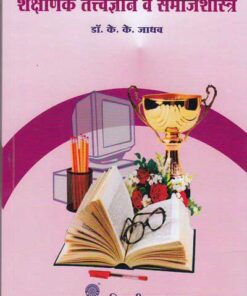 शैक्षणिक तत्त्वज्ञान व समाजशास्त्र (SHAIKSHANIK TATTVADNYAN VA SAMAJSHASHTRA)
शैक्षणिक तत्त्वज्ञान व समाजशास्त्र (SHAIKSHANIK TATTVADNYAN VA SAMAJSHASHTRA) 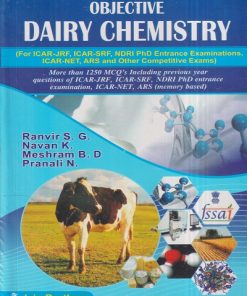 OBJECTIVE DAIRY CHEMISTRY | RANVIR S.G., NAVAN K., MESHRAM B.D., PRANALI N. | Jain Brothers
OBJECTIVE DAIRY CHEMISTRY | RANVIR S.G., NAVAN K., MESHRAM B.D., PRANALI N. | Jain Brothers 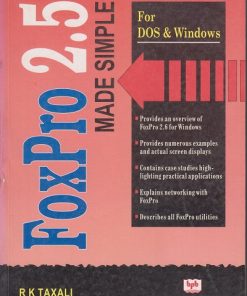 FOXPRO 2.5 MADE SIMPLE - BPB PUBLICATION
FOXPRO 2.5 MADE SIMPLE - BPB PUBLICATION 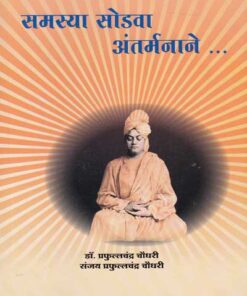 समस्या सोडवा अंतर्मनाने (SAMASYA SODVA ANTARMANANE)
समस्या सोडवा अंतर्मनाने (SAMASYA SODVA ANTARMANANE) 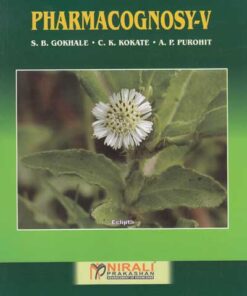 PHARMACOGNOSY V (5) for Gujarat Technological University (GTU)
PHARMACOGNOSY V (5) for Gujarat Technological University (GTU)  MHT CET TRIUMPH PHYSICS 2023 Solutions To MCQs | Target Publications
MHT CET TRIUMPH PHYSICS 2023 Solutions To MCQs | Target Publications 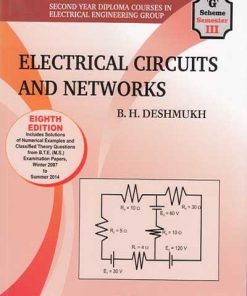 ELECTRICAL CIRCUITS AND NETWORKS
ELECTRICAL CIRCUITS AND NETWORKS 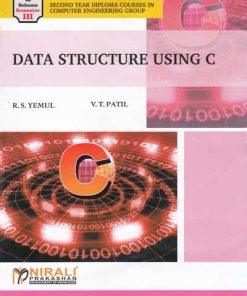 DATA STRUCTURE USING C
DATA STRUCTURE USING C 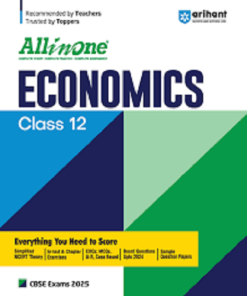 ALL IN ONE ECONOMICS CBSE Class 12th | Arihant Publications
ALL IN ONE ECONOMICS CBSE Class 12th | Arihant Publications 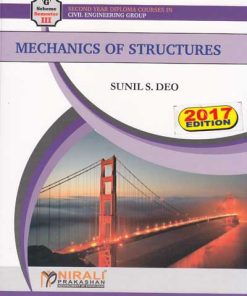 MECHANICS OF STRUCTURES
MECHANICS OF STRUCTURES 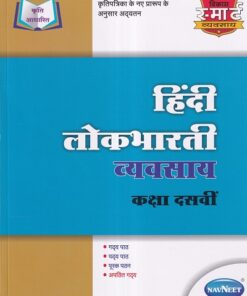 हिंदी लोकभारती व्यवसाय (WORKBOOK) कक्षा दसवीं/Std. 10 | नवनीत एज्युकेशन (इंडिया) लि (Navneet Education India Ltd)
हिंदी लोकभारती व्यवसाय (WORKBOOK) कक्षा दसवीं/Std. 10 | नवनीत एज्युकेशन (इंडिया) लि (Navneet Education India Ltd) 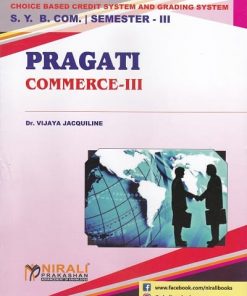 COMMERCE 3 : MANAGEMENT - FUNCTIONS AND CHALLENGES
COMMERCE 3 : MANAGEMENT - FUNCTIONS AND CHALLENGES 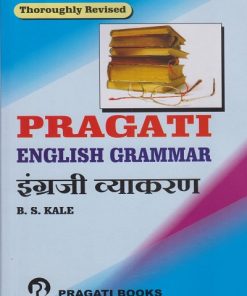 PRAGATI ENGLISH GRAMMAR (INGREJI VYAKARAN) - THOROUGHLY REVISED (For Std 5th to 10th)
PRAGATI ENGLISH GRAMMAR (INGREJI VYAKARAN) - THOROUGHLY REVISED (For Std 5th to 10th) 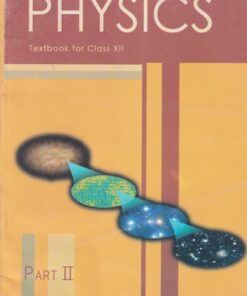 PHYSICS Part 2 - NCERT Textbook for Class 12
PHYSICS Part 2 - NCERT Textbook for Class 12  ENERGY AND ENVIRONMENT ENGINEERING - First Year (F.Y) B.Tech Courses (Group – A : Chemical/Mechanical/Civil/Petrochemical - Semester – I & Group – B : Electrical/Electronics & Telecommunication/Computer/IT - Semester – II)
ENERGY AND ENVIRONMENT ENGINEERING - First Year (F.Y) B.Tech Courses (Group – A : Chemical/Mechanical/Civil/Petrochemical - Semester – I & Group – B : Electrical/Electronics & Telecommunication/Computer/IT - Semester – II)  MHT CET TRIUMPH BIOLOGY 2023 Solutions To MCQs | Target Publications
MHT CET TRIUMPH BIOLOGY 2023 Solutions To MCQs | Target Publications 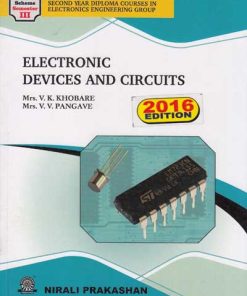 ELECTRONIC DEVICES AND CIRCUIT
ELECTRONIC DEVICES AND CIRCUIT 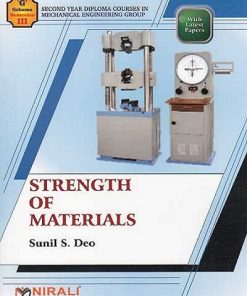 STRENGTH OF MATERIALS
STRENGTH OF MATERIALS 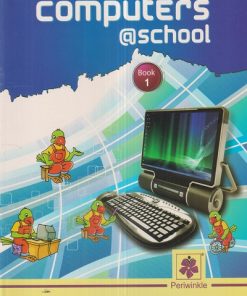 COMPUTER @ SCHOOL Book 1 | Periwinkle/Jeevandeep
COMPUTER @ SCHOOL Book 1 | Periwinkle/Jeevandeep 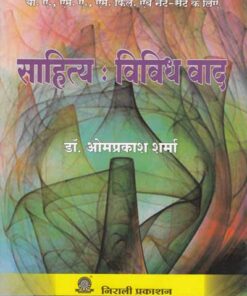 साहित्य : विविध वाद (SAHITYA : VIVIDH VAADH)
साहित्य : विविध वाद (SAHITYA : VIVIDH VAADH) 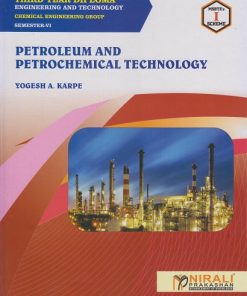 PETROLEUM AND PETROCHEMICAL TECHNOLOGY - CHEMICAL ENGINEERING – MSBTE – ‘I’ SCHEME
PETROLEUM AND PETROCHEMICAL TECHNOLOGY - CHEMICAL ENGINEERING – MSBTE – ‘I’ SCHEME 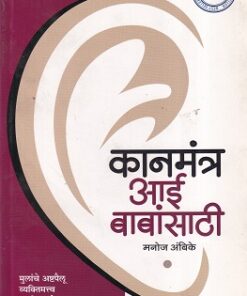 कानमंत्र आई बाबांसाठी | मनोज अंबिके | मिरर पब्लिशिंग
कानमंत्र आई बाबांसाठी | मनोज अंबिके | मिरर पब्लिशिंग 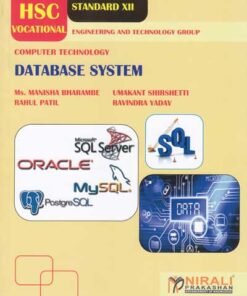 DATABASE SYSTEM - Computer Technology
DATABASE SYSTEM - Computer Technology 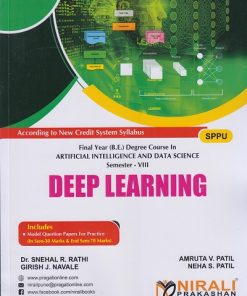 DEEP LEARNING (Final Year (B.E.) Degree Course In Artificial Intelligence And Data Science - Semester – 8 SPPU)
DEEP LEARNING (Final Year (B.E.) Degree Course In Artificial Intelligence And Data Science - Semester – 8 SPPU) 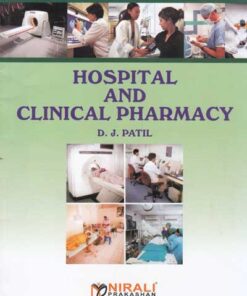 HOSPITAL AND CLINICAL PHARMACY
HOSPITAL AND CLINICAL PHARMACY  VIKAS APPLE TICK TOCK TABLES (1-10) | Navneet Education Ltd
VIKAS APPLE TICK TOCK TABLES (1-10) | Navneet Education Ltd 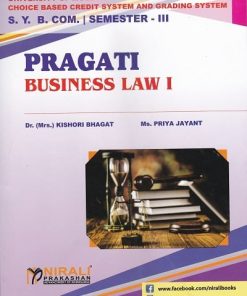 BUSINESS LAW - 1
BUSINESS LAW - 1 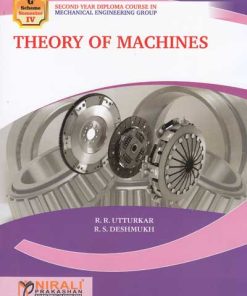 THEORY OF MACHINES - G SCHEME
THEORY OF MACHINES - G SCHEME  CBSE Chapterwise Solved Papers (2023-2010) Class- 12th ACCOUNTANCY | Arihant Publications
CBSE Chapterwise Solved Papers (2023-2010) Class- 12th ACCOUNTANCY | Arihant Publications 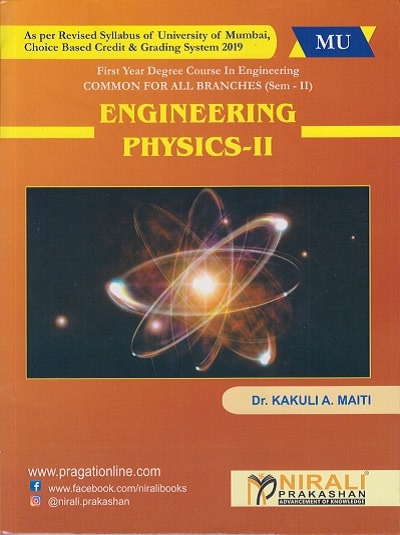
 Zoom
Zoom

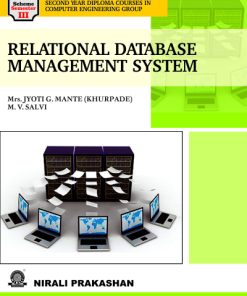
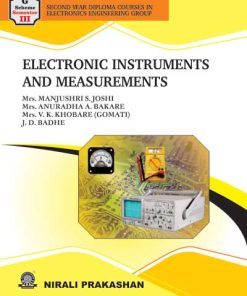
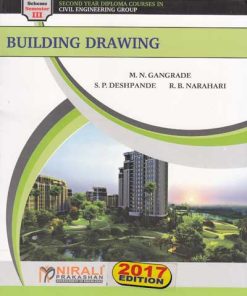
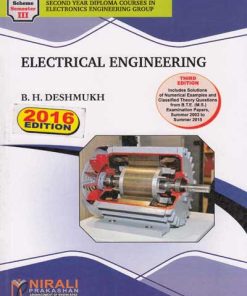
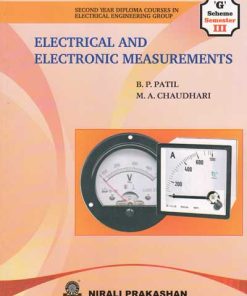
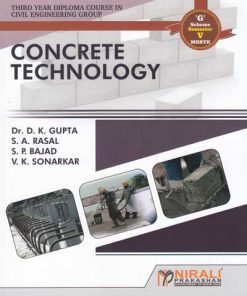



Reviews
There are no reviews yet.